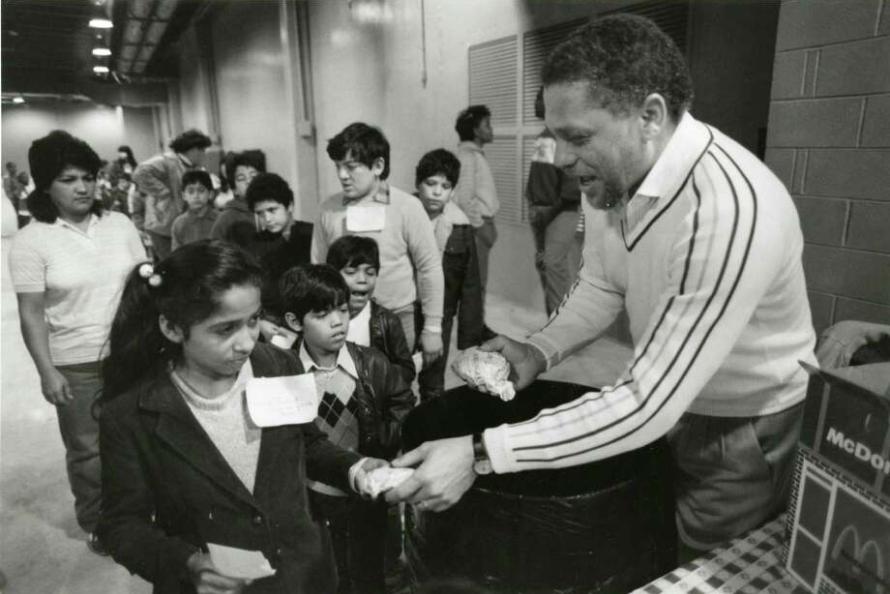As a part of the IAH Terminal Redevelopment Program, ITRP, refurbishment of the Mickey Leland International Terminal (MLIT) is well underway. The impressive statue of the terminal’s namesake, George Thomas “Mickey” Leland III, can be found inside the glass wall at the security checkpoint in Terminal D.
Over the years, visitors have come across the outstanding bust, a work created by legendary sculptor Ed Dwight in 1990, and someone has invariably asked, “Who was Mickey Leland?”
Ivory “Bo” Davis, Houston Airports’ Chief Inspector, is in a unique position to answer that question.
“Mickey Leland was my chemistry teacher in 1972, my senior year at Furr High School in Houston,” Davis said. “The regular teacher took ill and Mr. Leland substituted for him for the remainder of the school year.”
He remembered that Leland was committed to his students learning the basics of chemistry and still recalls his introduction in the class to the Periodic Table of Elements.
“Mr. Leland stressed the importance of going to institutions of higher learning and obtaining a degree,” Davis said. “His mentorship and role modeling helped in shaping my educational background. When I was in high school, Chemistry was offered only to students that were seeking college after graduation.”
“Mr. Leland always pushed us to be the best that we could be.”
The year 1972 was also the year that Leland began his political ascension, first elected to the Texas House of Representatives. He was reelected in 1974 and again in 1976. While serving in Austin, he became a strong advocate of healthcare rights for impoverished Texans. He spearheaded legislation that provided low-income consumers with access to affordable generic drugs and supported health care access through Health Maintenance Organizations, HMOs.
Leland was a committed humanitarian: he visited soup kitchens and makeshift shelters and became increasingly concerned about the plight of people who were hungry and homeless. The work for which Leland is best remembered began when he co-authored legislation with U.S. Rep. Ben Gilman (R-New York State) to establish the House Select Committee on Hunger. U.S. Speaker of the House Thomas “Tip” O'Neill named Leland committee chairman when it was enacted in 1984.
After serving six years in the Texas State Legislature, Leland was elected to the U.S. House of Representatives in November 1978, representing the 18th District which included the neighborhood he grew up in. He was re-elected to each succeeding Congress for two-year terms in 1980, 1982, 1984, 1986, and 1988, serving until his death.
Reports of acute famine in sub-Saharan Africa prompted Speaker O'Neill to ask Leland to lead a bipartisan Congressional delegation to assess conditions and relief requirements. When he returned stateside, he brought together an unlikely coalition of entertainment personalities, religious leaders, and private voluntary agencies to create general public support for the Africa Famine Relief and Recovery Act of 1985. That legislation provided $800 million in food and humanitarian relief supplies and saved thousands of lives.
While leading a humanitarian relief mission in 1989 to an isolated refugee camp in Fugnido, Ethiopia, Leland's plane crashed into the Ethiopian mountainside. The force of the crash killed everyone aboard, including Congressman Leland, his chief of staff Patrice Johnson, and 13 other passengers from several government, humanitarian, and development organizations.
Leland made an indelible impression on many, including Davis.
“When I worked on my tools as an electrician, I took on the maintenance of the MLIT,” he said. “I volunteered to take care of the electrical maintenance for years. I even supervised the installation of the lights that illuminated his bust.”
“His legacy is strong, and it lives on,” Davis said.

